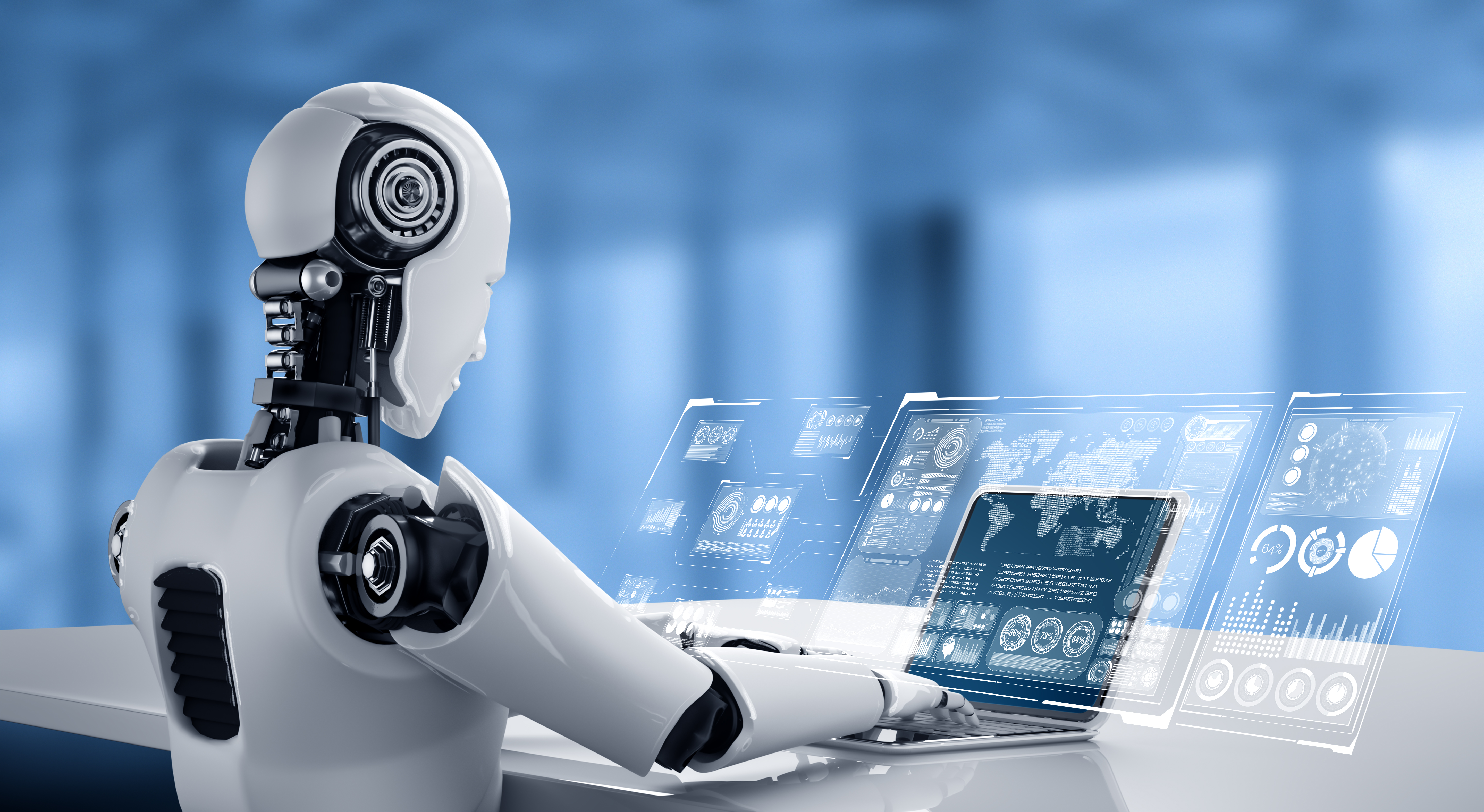
Wall Street keeps talking about artificial intelligence (AI)-powered chatbots. They’re missing the bigger prize. The real money lies in robots that do things: picking packages, welding parts, moving inventory. (Imagine a universe where the only thing more chaotic than a toddler with a hammer is a stock analyst trying to predict robot adoption. And yet, here we are.) Goldman Sachs just tripled its humanoid robot forecast to $38 billion by 2035, while industrial robotics could climb to a whopping $94 billion. And thanks to AI foundation models, robots are suddenly 10 times cheaper to train. (One might say the universe has finally learned to delegate.)
Look at Amazon (AMZN) warehouses. More than a million robots already work alongside people to move billions of packages. That’s not science fiction, it’s happening today. (Or as someone once said, “The future is already here-it’s just not evenly distributed.”) Tesla (TSLA) is scaling humanoid production from hundreds toward thousands. Nvidia (NVDA) supplies the Isaac platform that powers both companies, along with nearly every other serious robotics program. Together, these three tech giants give investors distinct paths into the $130 billion robotics wave that’s only just starting to break. (Or as the Hitchhiker’s Guide would put it, “Don’t panic-unless you’re a stock analyst.”)
Tesla’s $20,000 gamble
Tesla claims Optimus could one day represent 80% of its future value. That sounds extreme, but CEO Elon Musk has a track record of turning audacious ideas into reality often years later than promised. In 2025, the company managed only a few hundred units, far short of its 5,000-robot goal, and leadership turnover has raised questions about execution. (One wonders if the robots are more reliable than the executives.)
The bet comes down to cost. Tesla is targeting $20,000 to $30,000 per humanoid, while rivals like Figure and Boston Dynamics price well above $100,000. If Tesla can hit that price point, humanoids move from rare capital expenditures to scalable operating expenses. (It’s like giving a robot a budget-suddenly, they’re not just tools, but potential partners in crime.) Even its diner deployment, which looked like a publicity stunt, generated real-world data that no lab simulation can match.
Tesla’s advantage is vertical integration. The same neural networks guiding cars can guide robots, its electric vehicle (EV) batteries can power humanoids, and its factories already scale in volumes that competitors can’t touch. Shares are up about 5.5% this year, and at 166 times forward earnings, the stock assumes near-perfect execution. Still, if Optimus delivers even a fraction of its promise, the upside could dwarf today’s core automotive business. (Or as the universe might say, “Let’s see if you can keep up.”)
Amazon’s million-robot advantage
Amazon doesn’t chase hype. It quietly runs the world’s largest robotic fleet more than 1 million units already deployed across its fulfillment network. These aren’t prototypes, but production systems that move millions of packages every day. (It’s as if the company built a symphony of machines, and no one noticed.)
With the rollout of DeepFleet, Amazon says it improved travel efficiency by about 10%, a modest gain that compounds massively at a global scale. Its Hercules robots lift 1,250 pounds, while Proteus units navigate safely among human workers, blending heavy-duty capability with human-friendly design. (One might argue Amazon has mastered the art of making robots seem less like machines and more like colleagues.)
The advantage isn’t just volume but integration. Next-generation facilities now operate an order of magnitude more robots than older sites, yet they also employ more skilled technicians in maintenance and reliability. (It’s a delicate balance between automation and human oversight-like trying to teach a robot to appreciate a good cup of tea.)
Amazon’s model proves automation shifts work rather than erases it, while driving throughput and lowering unit costs. Competitors show off demos; Amazon embeds robotics into daily operations. That discipline creates a durable edge and an earnings flywheel few rivals can replicate. (One could say Amazon has turned robotics into a quiet, relentless force of nature.)
Nvidia’s robotics platform lead
Nvidia doesn’t build robots it builds the software and chips that make them work. The tech giant’s Isaac GR00T foundation model trains humanoids, Isaac Lab and Sim provide the simulation environment, and Jetson Thor brings high-end inference to the edge. This stack is quickly becoming the default toolkit for robotics teams from Boston Dynamics to Agility, even as some companies layer in their own custom systems. (It’s the digital equivalent of a Swiss Army knife, but with more silicon and fewer blades.)
The playbook mirrors Nvidia’s CUDA dominance in AI training: Create indispensable software and let hardware demand follow. By selling the brains, tools, and pipelines, Nvidia captures value no matter which robot design wins. At roughly 50 times earnings, the stock already assumes excellence, but if robotics adoption scales toward the trillion-dollar forecasts, a platform-style take rate on physical AI could still leave plenty of upside. (It’s like being the inventor of the wheel, but also the guy who sells the oil for the axles.)
So there you have it-a glimpse into a future where robots aren’t just tools, but potential partners in the great cosmic dance of commerce. Whether they’ll be our allies or our overlords remains to be seen. (But if they do take over, at least they’ll have good taste in stocks.)
🤖
Read More
- Bitcoin’s Ballet: Will the Bull Pirouette or Stumble? 💃🐂
- Can the Stock Market Defy Logic and Achieve a Third Consecutive 20% Gain?
- Dogecoin’s Big Yawn: Musk’s X Money Launch Leaves Market Unimpressed 🐕💸
- Deepfake Drama Alert: Crypto’s New Nemesis Is Your AI Twin! 🧠💸
- LINK’s Tumble: A Tale of Woe, Wraiths, and Wrapped Assets 🌉💸
- SentinelOne’s Sisyphean Siege: A Study in Cybersecurity Hubris
- XRP’s Soul in Turmoil: A Frolic Through Doom & Gloom 😏📉
- Binance’s $5M Bounty: Snitch or Be Scammed! 😈💰
- Ethereum’s $140M Buy: Will It Save Us? 😱
- ADA: 20% Drop or 50% Rally? 🚀💸 #CryptoCrisisComedy
2025-09-25 16:29